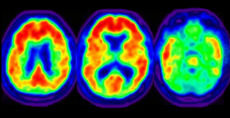
Having covered several modern day neuroscience techniques in the previous article, this article will focus more specifically on functional techniques. These are ones which can show both the spatial layout of the brain and its change over time, and so are the best for trying to create a map of different functions across the brain. They are slightly more complex than the other techniques and are the ones that have been developed most recently, so I thought they deserved a closer look at within an article of their own.
Functional neuroimaging is based not around the structures of the brain itself and cannot tell directly where more work is being done, but can calculate this indirectly from blood flow. It involves looking at where oxygenated blood travels around the brain, as the areas where the Oxygen is being taken are those which are most active. This studying of the movement of blood is known as haemodynamics, and has become an important tool in learning more about brain structure.
Perhaps the earliest method of functional brain imaging was PET, or Positron Emission Tomography. This appeared in the 70s and involves the injection of radioactive isotopes into the bloodstream. The individual is then measured using a scanner for radioactivity, and where the isotope is picked up around the body, the oxygenated blood flow must be going. This means that these areas are most active. The problem with this method of functional neuroimaging is that the resolution of the image is relatively low and in order for the isotopes to be safe, they must decay quickly preventing their use in studying longer mental activities.
The more recent method of functional brain imaging is fMRI (Functional Magnetic Resonance Imaging). This is different from standard MRI scanning, which simply shows the structure of the brain, however since both use the same machine (an MRI scanner), they both have very similar names and can easily be confused. fMRI only emerged in the 1990s and uses a different method, but to produce a similar result to PET scans, however this method may be safer, produces a sharper image and can be carried out over longer durations to study longer activities and their effect on the brain. It measures magnetic differences between oxygenated and deoxygenated blood and so can calculate where oxygen leaves the blood and therefore where activity is taking place. While they are a step up from PET scanners, they are vastly more expensive and there is some delay in the response, meaning that it is difficult to see in-depth miniscule changes over time. With further development on this technique we may be able to achieve an even more accurate measure of blood flow across time.
There is much debate about the use of neuroscience in psychology and whether it really helps to understand the brain any better. Some have posed the view that knowing where a function comes from in the brain does not enable us to understand the actual behaviour any better or to predict it, with very few real-world applications. However, functional neuroscientists defend the discipline, saying that since all psychology seemingly stems from the brain, we can only truly understand our behaviour from studying the brain itself. Wherever you stand in this debate, it seems that for neuroimaging to be truly useful and beneficial to furthering our understanding of the mind, technology and scientific understanding must further develop, so that we can create a more detailed picture of brain functioning down to perhaps even the level of individual neurons and it is exciting to consider the major scientific breakthroughs that this would make way for.
Image from: http://1.bp.blogspot.com/-iy_T8cWW2yQ/Uom5rllN2jI/AAAAAAAADYU/xJHeHVpr2rw/s640/Amyloid+PET+scan.png

0 Comment:
Be the first one to comment on this article.